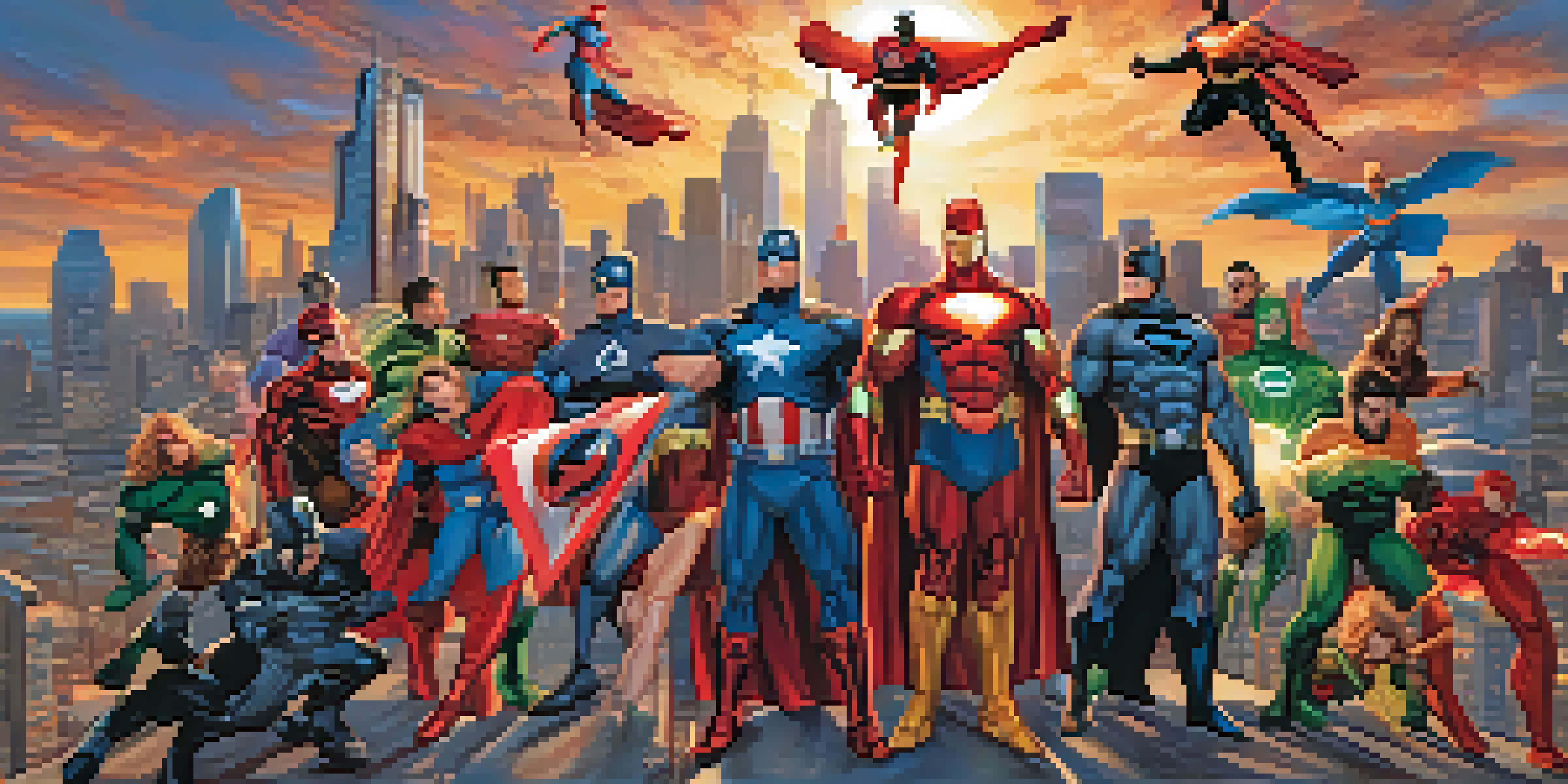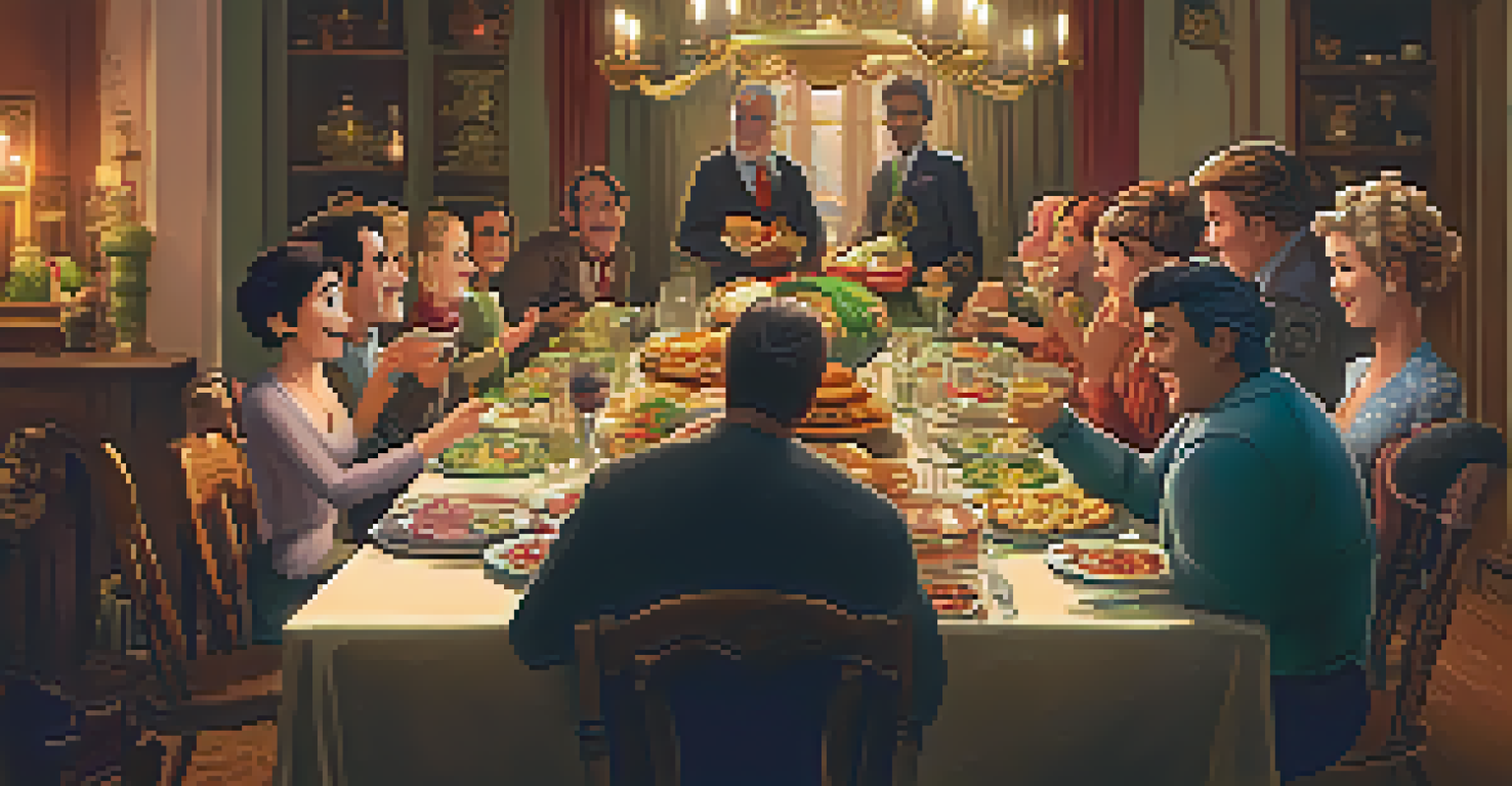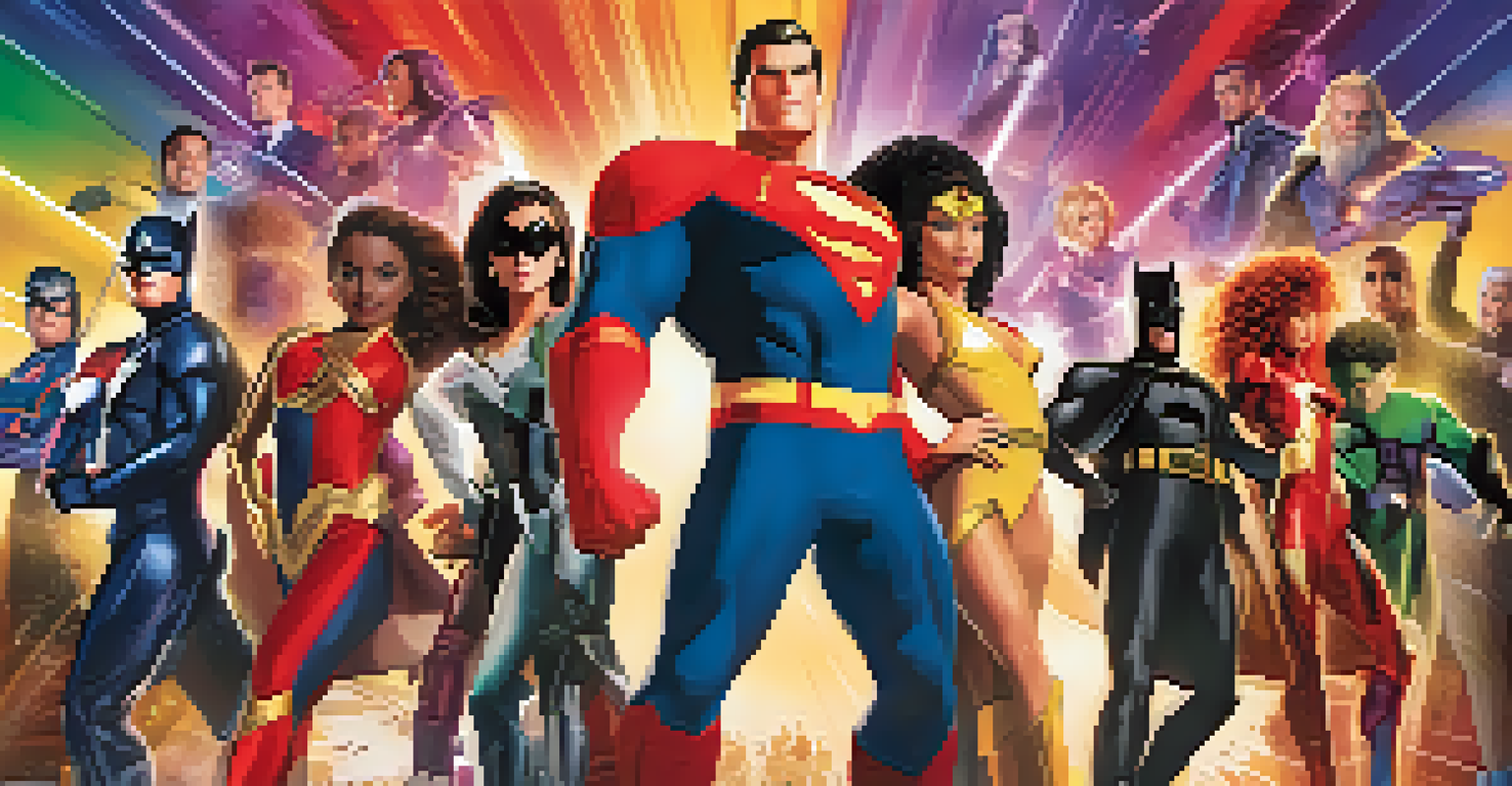Crossover Events: Merging Hollywood Films with TV Series

Understanding Crossover Events in Entertainment
Crossover events are special moments when characters from different shows or movies meet, creating a unique blend of narratives. This phenomenon has become increasingly popular in recent years, captivating audiences with the thrill of familiar faces interacting in unexpected ways. Think of it as a delightful surprise, like running into an old friend in an unexpected place. They often serve as a way to refresh the storyline and engage viewers with a sense of continuity across different media.
Crossover events are the ultimate fan service, bringing together characters we love in ways we never imagined.
At its core, a crossover connects distinct universes, allowing for creative storytelling that can enhance the depth of each character involved. For example, when superheroes from various comic book adaptations come together, it not only thrills fans but also offers fresh dynamics to explore. These events remind us that our favorite characters exist in a larger tapestry, sparking curiosity about their individual journeys and how they intersect.
However, crossovers can be tricky to pull off. Writers must balance the established lore of each franchise while crafting new interactions that feel genuine. It's a delicate dance, akin to mixing flavors in a dish; too much of one can overpower the others, while the right blend creates something extraordinary.
Iconic Hollywood Films That Have Crossed Over
When we think of crossover events in Hollywood films, some iconic examples come to mind. The 'Avengers' franchise is perhaps the most notable, bringing together various superheroes from the Marvel Cinematic Universe (MCU) in a way that feels organic and thrilling. These films not only broke box office records but also set a new standard for interconnected storytelling in cinema, leading to a surge of interest in shared universes.

Another example is 'Alien vs. Predator,' which combined elements from two beloved franchises, inviting fans to see their favorite creatures battle it out. This crossover not only sparked debates among fans but also demonstrated how merging different genres can yield unexpected results. It’s a cinematic experiment that invites audiences into a thrilling showdown, even if the execution is sometimes hit or miss.
Crossover Events Enhance Storytelling
They allow characters from different narratives to interact, creating fresh dynamics and deepening the audience's engagement.
These films showcase the potential of crossovers to create buzz and excitement while tapping into the nostalgia of established fanbases. They serve as a reminder that the boundaries between different narratives can be fluid, offering viewers a chance to reimagine their favorite characters in new contexts.
Television Series That Embrace Crossover Events
Television has its share of memorable crossover events that have left audiences buzzing. Shows like 'The Flash' and 'Arrow' frequently cross paths, allowing characters from the DC Universe to unite against common foes. These events not only deepen the lore of each series but also create a shared experience for fans, who eagerly anticipate these collaborative episodes.
The beauty of a crossover is that it expands the universe of storytelling, allowing characters to exist in new and exciting contexts.
Another standout example is the 'Chicago' franchise, which brings together 'Chicago Fire,' 'Chicago P.D.,' and 'Chicago Med' for thrilling crossover storylines. This interconnectedness enhances the narrative stakes, engaging viewers in a broader story that can span multiple episodes and series. It’s like watching a well-orchestrated symphony where each instrument plays a crucial role in delivering a powerful performance.
These crossover events bring an element of surprise and excitement to television, encouraging viewership across multiple shows. They also foster a sense of community among fans, as they come together to discuss theories and outcomes from these shared storylines.
The Appeal of Crossovers: Why Do We Love Them?
The allure of crossover events lies in their ability to blend universes, giving fans a taste of what could happen when their favorite characters meet. This merging creates a sense of anticipation, as viewers are eager to see how different personalities clash or collaborate. It’s like imagining a dinner party where your favorite fictional characters gather; the possibilities for dialogue and interactions are endless.
Moreover, crossovers often reignite interest in both franchises involved, drawing in viewers who may have previously overlooked one of the series. They serve as a bridge, connecting different fanbases and creating a larger community around shared interests. This can lead to new discussions, fan theories, and even collaborations among viewers, enhancing the overall experience.
Challenges in Creating Crossovers
Writers must balance character integrity and logistics while meeting fan expectations, making successful crossovers a complex task.
Ultimately, crossovers tap into our desire for connection and continuity in storytelling. They remind us that the worlds we love can intersect, creating richer narratives and inviting us to explore new dimensions of our favorite characters.
Challenges of Creating Successful Crossover Events
While crossovers are exciting, they come with their own set of challenges. Writers must ensure that the characters remain true to their original story arcs while adapting to new contexts. This balancing act can be tricky; if not handled well, it can lead to confusion or disappointment among fans who have invested time in the individual series.
Additionally, logistical issues can arise, especially when coordinating schedules for actors and crew from different productions. Just imagine trying to gather all your friends for a reunion; it can be quite the task! This complexity can lead to delays or changes in plans, sometimes causing fans to wait longer than anticipated for these highly-anticipated events.
Moreover, the expectation surrounding crossover events can be daunting. Fans come in with high hopes, and if the execution doesn’t live up to their expectations, it can lead to backlash. This pressure highlights the importance of thoughtful planning and collaboration among creators to deliver a satisfying experience.
Future Trends in Crossover Events
Looking ahead, the future of crossover events appears promising, especially as streaming platforms continue to grow. With the rise of interconnected storytelling across different platforms, we may see even more ambitious crossovers that span films, series, and even animated content. This evolution could open up a world of possibilities, allowing for innovative narratives that engage viewers in new ways.
Additionally, as audiences become more diverse, there’s an opportunity for crossovers to explore new themes and characters. This could lead to stories that resonate with a broader audience, tapping into different cultures and experiences. The potential for inclusivity and representation could enhance the impact of these crossover events, making them even more relevant.
Future of Crossovers Looks Bright
The rise of streaming platforms and diverse audiences opens up new opportunities for innovative crossover storytelling.
In this ever-evolving landscape, it’s clear that the love for crossovers will continue to thrive. As fans clamor for more creative blends of their favorite characters, we can expect to see even more adventurous storytelling that pushes boundaries and captivates audiences.
The Impact of Crossovers on Fandom and Culture
Crossover events not only entertain but also significantly influence fandom culture. They create a shared experience for fans, sparking discussions, fan art, and even conventions centered around these unique intersections. This communal aspect fosters a deeper connection among fans, as they bond over their shared love for these crossover moments.
Moreover, crossovers often lead to the creation of new fan theories and speculation, as viewers ponder what might happen next. This engagement keeps the conversation alive long after the event has aired, ensuring that the impact of these crossovers lingers in the minds of fans. It’s similar to a great cliffhanger in a book; it keeps us turning the pages, eager to find out what happens next.

Ultimately, the influence of crossover events extends beyond mere entertainment; they shape the way we engage with stories and characters. As they continue to evolve, these intersections will likely play a crucial role in defining the future of storytelling in film and television.